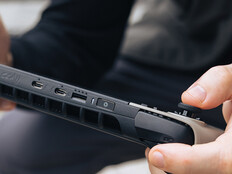CCPL added the Oculus Rift and Google Expeditions VR in 2017 and just recently added the Oculus Quest to its VR lineup.
“Our VR rigs are shared systemwide between all six of our branches to offer an introduction to VR through a variety of demos,” Bishop and Kuntz say. “Even three years later, there are still many in our community who have never experienced VR, especially high-end, PC-based VR.”
Libraries are known for supporting literacy, Sant Cruz’s Jones says, noting that it’s “kind of one of their subtext missions.”
“Something that we as an organization like to support is learning opportunities,” he says. “We’re taking VR out of the gaming context and highlighting the software. It’s leaning toward learning to also have something that just aligns better toward the library’s mission.”
VIDEO: See how San Diego is undertaking digital transformation.
Examples of Virtual Reality in Libraries
CCPL has been able to introduce the community to VR and augmented reality and start the discussion for practical applications for these technologies in industry, healthcare, education and other areas, according to Bishop and Kuntz.
“We have also been able to engage our staff with utilizing VR and other emerging technologies in existing programs, such as using VR to virtually travel to a destination highlighted in a book club discussion,” they say.
CCPL has also used VR in its outreach programming, having high school art students create 3D art in VR as a class and taking VR to local Boys & Girls Club for afterschool programs, as well as to local senior centers, according to Bishop and Kuntz.
“Moving forward, CCPL is working to support content creation for VR and AR with platforms such as Cospaces Edu and Unity, as well as through the opening of a dedicated VR/AR lab at Exploration Commons at 50 East in 2020,” they say.
Santa Cruz Public Libraries’ VR program has evolved significantly since it was first introduced to the public in early 2018, according to Jones. The library system received a grant to purchase HTC VIVE and Oculus Rift headsets and tower PCs to support them. The library in mid-2018 added two Oculus Go wireless headsets. Throughout 2018, librarians brought the VR headsets to 40 different programs.
At first, the headsets traveled around the 10-branch system and were used for overviews of VR technology and short demos. However, even though the library system was getting positive reviews of these programs, it was not getting the attendance it wanted, Jones says. So, the library pivoted and used extra funds to purchase 360-degree cameras to show off their capabilities in VR.












